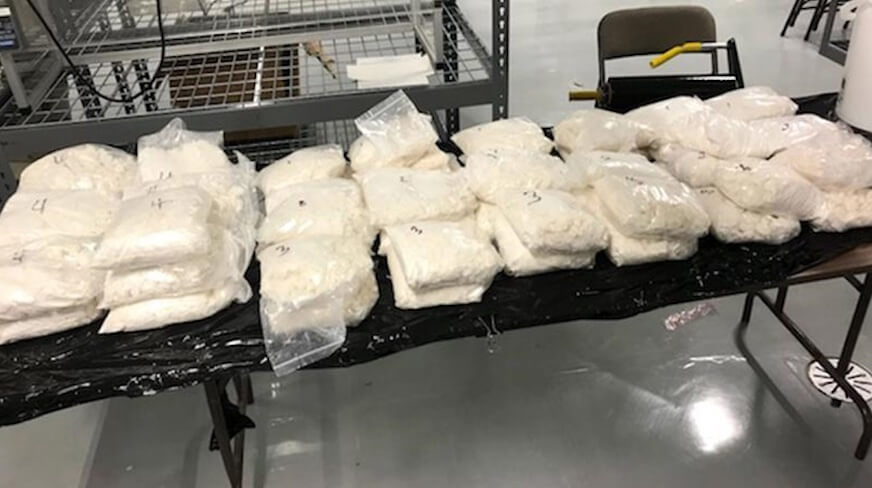Drug-sniffing dogs with the U.S. Customs and Border Protection agency recently discovered 110 pounds of the highly addictive and notoriously deadly drug, fentanyl, officers said.
The fentanyl, which has an estimated street value of $1.7 million, was discovered last week during a routine exam of the Port of Philadelphia, according to a CPB announcement. The narcotics detector dog reportedly sniffed out the drugs in a shipment of iron oxide that originated in China.
The fentanyl weighed a combined 50 kilograms, or 110 pounds. High purity fentanyl such as this can sell for over $34,000 per kilogram on the street, the agency said.
“Opioids, including fentanyl and its analogues, are a serious public health concern, and the importation of vast amounts of this deadly synthetic chemical compound is a national security threat. Customs and Border Protection remains committed to keeping our communities safe by combatting the flow of illicit drugs, including synthetic opioids, into the United States,” said Casey Durst, CBP Director of Field Operations in Baltimore.
The CBP pointed to an upward trend in fentanyl seizures, with 444 pounds of the drug seized in 2016. That number grew to 951 pounds in 2017, and 984 pounds through the end of April 2018.
What is Fentanyl?
Fentanyl is a potent synthetic opioid drug approved by the Food and Drug Administration for use as and pain relief and anesthetic. It is roughly 100 times more potent than morphine and 50 times more potent than heroin as a pain reliever, according to the CBP. Fentanyl was first developed in 1959 and introduced in the 1960s as an intravenous anesthetic. It is legally manufactured and distributed in the United States, but the drug is frequently abused via theft, fraudulent prescriptions and illicit distribution by patients, physicians and pharmacists. The U.S. saw a marked increase of overdoses of the drug in 2005, and has since declared fentanyl a main culprit in the national opioid epidemic.






























